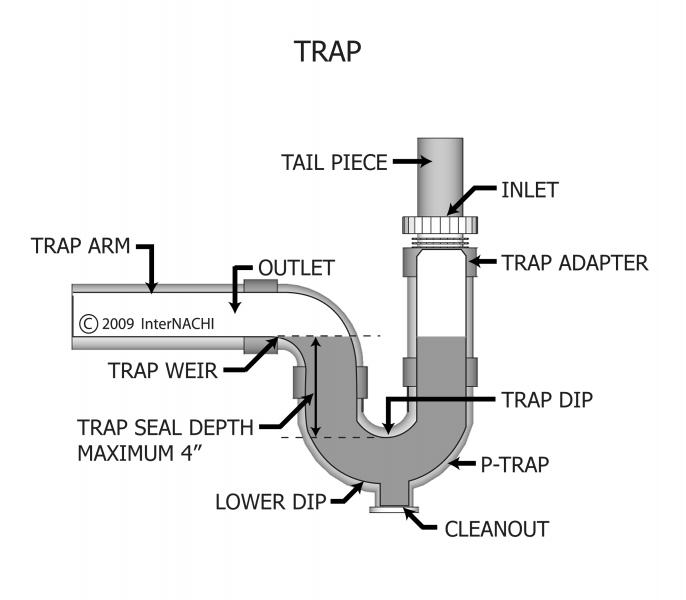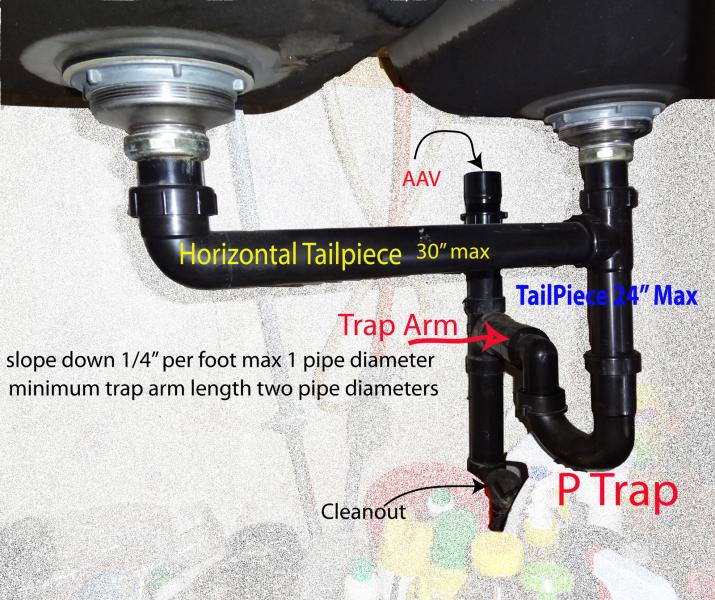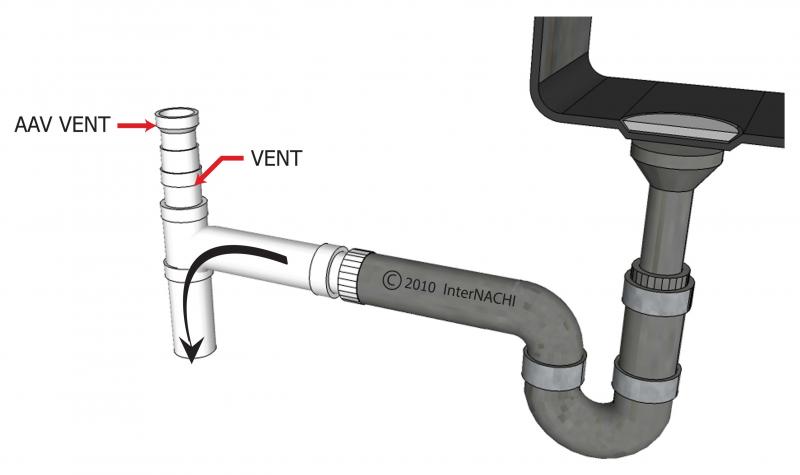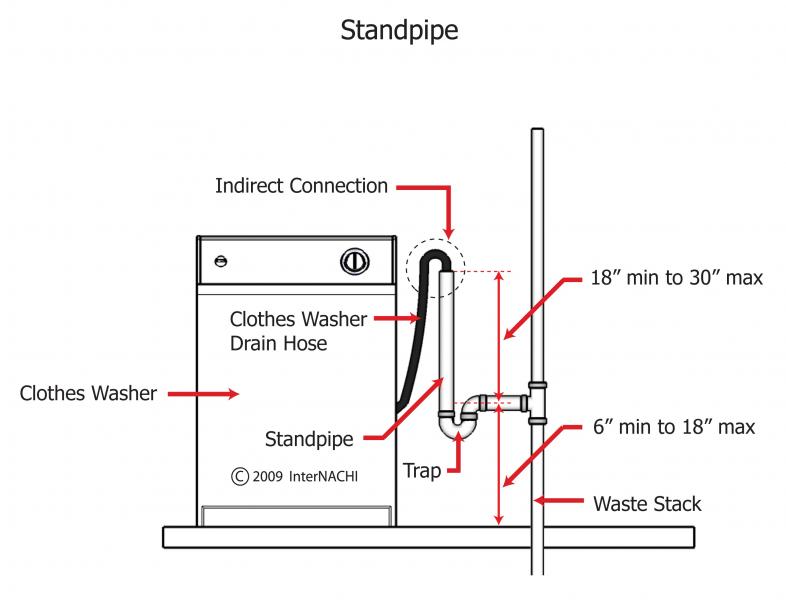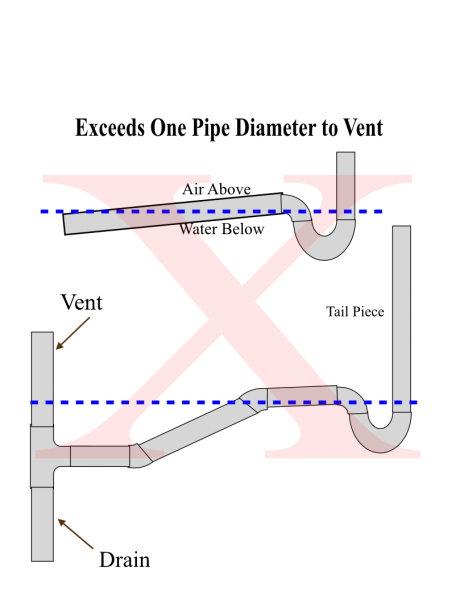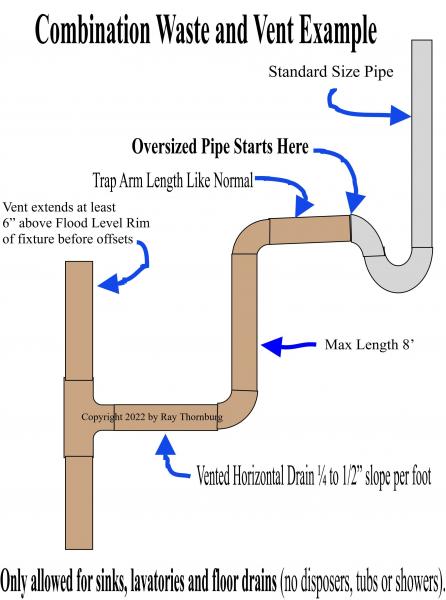- Home - Blue Palmetto Home Inspection of Summerville and Charleston
- Learn About Us and This Charleston Home Inspector
- What's Inspected
- Charleston Lowcountry Inspection Areas (geographic)
- Testimonials
- >>>Blogs (educational)
- Sample Reports & Documents
- Why Get a Home Inspection Report
- Charleston's Top Ten Reasons
- Home Inspector Photo Galleries
- Pricing
- Scheduling and Customer Information
- Home Inspection Authorization Contract
- General Scope of Work (electronic)
- Home Inspection Customer Satisfaction Survey
- Privacy Policy
- Full site
- The Roof Framers Field Manual
Charleston Home Inspector discusses plumbing traps, arms and vents
Submitted by Ray Thornburg on Mon, 11/05/2012 - 14:33

Blue Palmetto Home Inspection Discusses all those things we find under the kitchen sink like p-traps, arms, tailpieces and vents.
A P trap is that u shaped pipe under the kitchen sink. Its purpose is to hold a little water in the trap in order to keep sewer gases from entering the building. Sewer gasses can be dangerous so we don’t want them in the home. In order to keep the sewer gasses out and sewage flowing smoothly code officials developed rules that must be followed for proper drainage and safety. In addition to traps; vents are needed to keep pipes from gurgling and to help liquids to flow through the pipe.
Yes it's true that a lot of people think plumbing is easy as I've heard it said time and again " hot on left - cold on right -s*** runs down hill ". I say we should give credit to the man who keeps things running smoothly and thank him. A lot of special knowledge and a lot of specialized tools are needed.
So below is list of the most common things to look for when taking a peek under the kitchen sink. First we’ll talk about Traps. References IRC 3201.2-6
· Each fixture requires a trap except toilets which have a integral trap and fixtures which are close together can use the same trap.
· Fixtures sharing a trap max 30 inches apart horizontally.
· Trap seal minimum 2” to maximum of 4”. (This is how much water is held in the trap see pic)
· Set traps level and protect from freezing.
· No S traps, bell traps, drum traps, or traps with moving parts or interior partitions.
· Sized per 2006 irc table 3201.7
· Trap size equal or greater than fixture outlet size.
· No double traps.
Study the picture to the left carefully ( courtesy of internachi). Click the image to enlarge in a new window. Notice the tail piece, trap arm and the trap seal depth.
The fixture tailpiece is the pipe that comes straight down from the drain. Here are some rules for them. References IRC 3201.6,2706.2
· Fixture tailpiece maximum 24” vertical distance with the exception of a washing machine standpipe which is 18-30” per IRC 2706.2.
· Maximum 30” horizontal distance between vertical tailpiece and p trap vertical tailpiece.
· Directional fitting required for the discharge of the disposer or dishwasher. (i.e. wyes, combos, or tees with baffles)
On the left is a picture of the tailpiece,trap arm,p trap, aav (air admittance valve) correctly installed. Click photo to enlarge. Notice also two fixtures can share the same trap if closer than 30" as is pictured here. This is the usual way of doing this. The trap arm is after the p trap as a reader pointed out.
The trap arm is the horizontal pipe that extends from the p trap to the vent stack or waste stack. References IRC 3201.6-7, 3105.1-3,3201.1
· Trap must be same size as trap arm.
· Trap arm length must be a minimum 2x trap arm diameter.
· Trap arm length per 2006 irc table 3105.1
· Maximum Slope of pipes less than 3” diameter is ¼” per foot.
· Total fall of trap arm is one pipe diameter. ( i.e. if the minimum pipe size is 1 ¼” then the max trap arm length is 5’. 5/4 divided by ¼ = 5’)
· Only 1 trap permitted per trap arm except 2 traps allowed to join through a double-wye fitting to a common vent.
· Tubing trap require trap adapter
· Max 1 slip joint allowed on outlet side of trap.
· Clean out required for change in direction of more than 90 degrree in a 3” or less diameter pipe.
· Slip joints required to be accessible.
Vents prevent pressure differences in the pipe so that water doesn’t get sucked out of the trap.
To the left is another picture of the typical requirements of trap design. Click picture to enlarge.
You can see plumbing vents sticking up through the top of the roof of most homes. There are a lot of rules about venting so I’m only going to touch on the most general ones here. References IRC 3101.2.2.1, 3101.3, 3104.3, 3104.2, 3105.2-3
· All fixture traps require venting
· Vent system is not to be used for any other purpose.
· Slope vents to drain to soil or waste piping.
· No vent opening below trap weir except toilets.
· No crown vents – must be min. 2 pipe diameters from trap.
· Horizontal dry vents min 6” above flood level rim of fixture. Not ok under FLR.
· Minimum 1 vent to outside.
There is a type of vent called an air admittance valve. AAV is used where it is impractical to put in a regular vent like an island sink fixture. Some of the same rules apply to AAV but here are a few particular to AAVs. References IRC 3114.2-8
· OK at individual, branch, circuit and stack vents.
· Individual and branch type AAV to vent only fixtures on the same floor level and that connect to a horizontal branch drain.
· Individual AAV min 4” above fixture drain.
· Stack type AAV min ^” above FLR of highest fixture.
· AAVs terminating in attic min 6” above insulation.
· Space containing AAV must be accessible and ventilated.
· AAVs not ok for sumps or tanks.
Here is a typical method of installing an AAV type vent. Picture courtesy of internachi.
The picture on the left (courtesy of internachi) show the correct way to trap for a washing machine standpipe.
At left is an example of how not to vent a fixture. Water rushing down the tailpiece into the drain will create a pressure difference which may siphon the trap dry allowing sewer gases into the home. The fall of the trap arm cannot exceed one pipe diameter.
At left is a field example of just how not to vent a trap from the above illustration. The trap arm cannot exceed one pipe diameter. In this example it actually makes the trap way too deep so it is also subject to clogging.
Combination Waste and Vent
The one exception to having the trap arm directly connected to a vent/drain is when the drain diameter is much larger than the trap piping size . For instance a sink draining into a 3 or 4 inch drain line which extends up vertically past the trap arm by at least 4 inches. The idea is that water will never completly fill the drain pipe so the trap will not siphon dry. P3111.1 The rule is that a combination waste and vent shall not serve fixtures other than floor drains, sinks and lavatories. The sink cannot have a garbage disposer attached to it.
Here is another example of a combo waste and vent with the rules per 2015 IRC. Note* That this is not allowed on a shower or tub. Also note that the larger diameter pipe starts at the trap arm.
Bends, Elbows, Tees, and Wye's
Before we move on to trap installation defect pictures I thought I'd spend a moment talking about fittings in drain lines. Basically there are two parts of a plumbing system, vents and drains. Essentially drain line fittings need to be directional whereas vent couplings can have a sharper turn. A 1/4 bend (1/4 of a circle or 90 degrees) is used in the drain line whereas the 90 degree elbow in the picture below (in yellow) is used for the vent portion of the plumbing. Using a sharp elbow in the drain line will cause a clog point so you should restrict their use to the venting system (like the one in yellow below).
The sanitary tee at left (in blue) is only used where a drain goes from horizontal to vertical. It cannot be used in any other position. A regular tee (not pictured is way too sharp to use for anything but a vent.
The wye (in green) is used in a variety of circumstances (except fixture connections). A long turn wye (not pictured) should not be used in trap arms.
There are many different types of fittings but the bottom line is directional fittings are required to be used in the drainage portion of the plumbing system. So if you see a 90 degree elbow used in part of a drain (after the trap) it is wrong.
Now lets take a look at some more crazy do it yourself plumbing pics.
Amateur work here rusting out the sink, improper trap. Time to hire a plumber. If you look closely you can see some kind of glue or caulk someone used to try to stop the leak. Also visible is a flexible drain transition pipe. Most inspectors agree this type of pipe is not approved because the inside walls are not smooth and will hold gunk. This kind of pipe is thinner and prone to leakage and is a sign of amateur work. Frequently we find other issues whenever this stuff is used.
S traps are not allowed.... there is no trap arm.....not vented...... another do it yourself project.
Here is another one of those flexible pieces used improperly for a p trap. Leak waiting to happen.
Here's an improperly installed trap. This one can actually allow sewer gases into the house. Trap should be on the left side.
In this photo they are trying to use traditional island venting but the trap is way way too deep. It'll have to be reconfigured.
Can you see the double trap in this picture. Only one trap is needed under the tailpiece of the sink. The other one needs to be removed. The dishwasher drain hose needs to be tied up under the sink too in order to prevent back flow of sink water into the dishwasher.
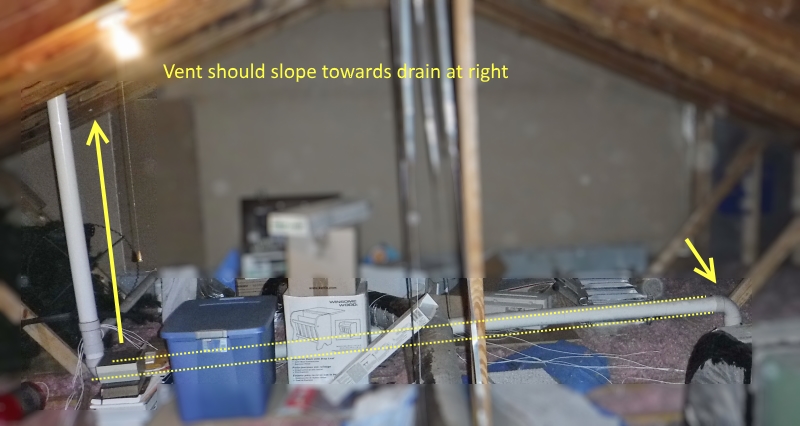 At left is an example of a vent stack (horizontal portion) which is improperly sloped. It should tilt towards the drain. Vent stacks are open at the top so can fill with water (like this one did) and prevent proper venting of the plumbing system.
At left is an example of a vent stack (horizontal portion) which is improperly sloped. It should tilt towards the drain. Vent stacks are open at the top so can fill with water (like this one did) and prevent proper venting of the plumbing system.
Besides the obvious supply leak what you cannot see in this picture is the trap under the bathroom sink directly above the trap pictured. That makes this double trapped (and more than 24" below the fixture) so is not allowed. Also the AAV vent is in the wrong location. It should have been 4" above the trap arm of the fixture it is serving. Essentially almost every plumbing rule was broken here...and it's leaking!
Toilet Venting
One subject I haven't touched on is toilet venting....yes toilets need venting too. On a toilet the trap is built into it. If you look carefully at the side of the toilet you can see it. So the vent would come off the toilet drain directly below the toilet flange in much the same way as a sink vent comes off the trap arm. Vents for a toilet are harder to confirm because they are mostly out of sight (behind walls, under the slab, etc.). If you hear gurgling in a nearby drain or small bubbles rising up through the toilet bowl then suspect a vent issue. Frequent clogging can suggest a vent issue, an improperly sloped pipe under the home (or other issues).
If you found this information useful then leave a comment. We'd love to hear from you!

